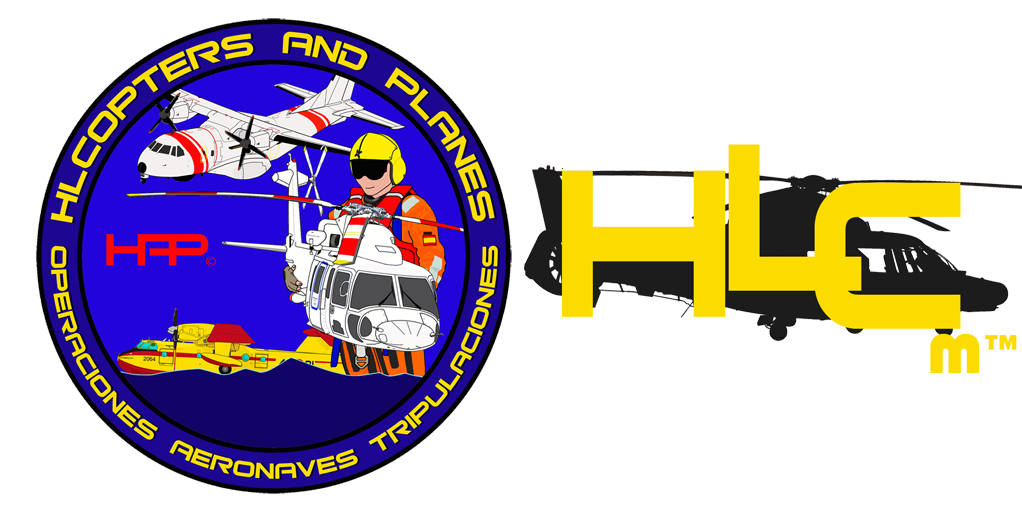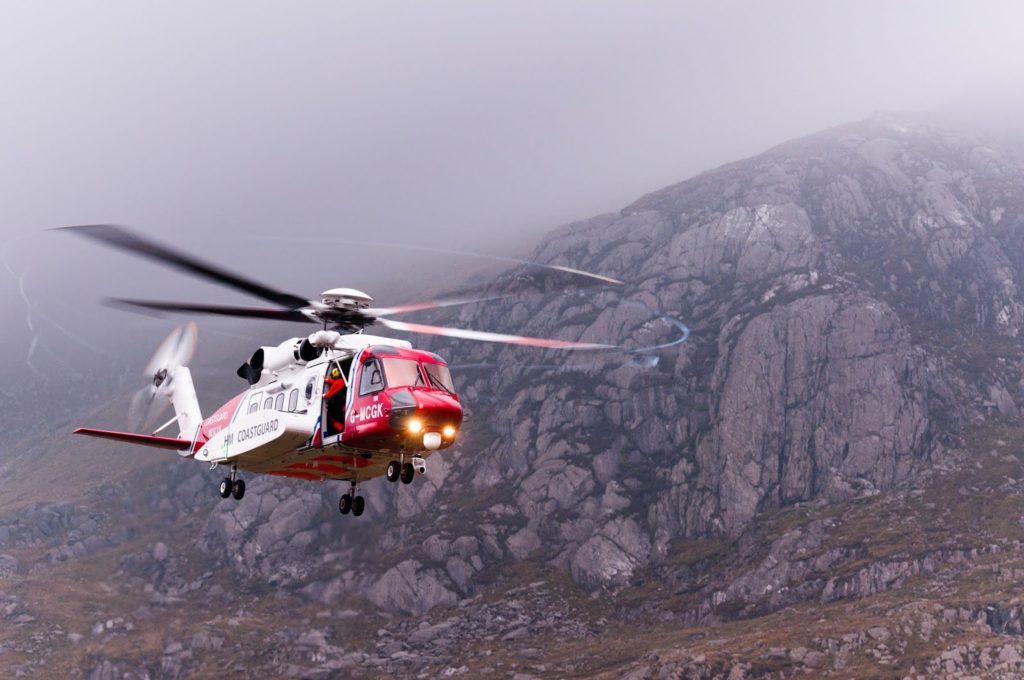
©Mike Gibson / Lockheed Martin.
HM Coastguard SARH statistics 2022.
This HM Coastguard search and rescue (SAR) helicopter fleet statistics covers the period 1 April 2021 to 31 March 2022.
The HM Coastguard search and rescue helicopters (SARH) data in the UK originates from the Aeronautical Rescue Co-ordination Center (ARCC) who are responsible for the co-ordination of SAR helicopters, and is provided to DfT by the Maritime and Coastguard Agency (MCA).
There were 2,747 civilian search and rescue (SAR) helicopter taskings in the UK in the year ending March 2022. This is a 26% increase compared to the year ending March 2021. The coronavirus pandemic is likely to have had an impact on tasking figures, whereby domestic holiday preferences may be related to the broad peak of taskings over the summer and autumn months.
On average, the search and rescue helicopters across the UK responded to 8 missions a day during the year ending March 2022.
1,608 people were rescued and 397 assisted by SAR helicopters across all taskings during the year ending March 2022. This is an increase of 34% and 71% respectively on the year ending March 2021. The highest proportion (47%) of people assisted were taskings from the Lydd base. Most bases saw an increase in the number of persons they assisted.

HM Coastguard SARH statistics 2022.
Of all taskings, 51% (1,407) were rescues or recoveries.
The HM Coastguard SAR helicopter services supported and completed 71% of all taskings during the year ending March 2022, a similar proportion to the previous year. A further 25% were terminated and 3% were diverted, suspended or cancelled.
Tasking definition
The response of a SAR helicopter to an emergency as notified by the Aeronautical Rescue Coordination Centre (ARCC).
Generally SARH taskings for the year ending March 2019 and year ending March 2020 follow the historic seasonal pattern including a peak in the summer months (July and August) followed by a decrease commencing in September and levelling off throughout winter.
In the year ending March 2021, SARH taskings were initially lower than previous years in April (64 taskings), when the UK-wide lockdown in response to the coronavirus pandemic was applied, and increased to near previous levels between May and June. August recorded the second highest monthly volume of SARH taskings on record (365 taskings) – attributable to an increase in beach taskings following lockdown easing. This may be related to summer 2020 travel behaviour and preference for domestic holidays in response to the coronavirus pandemic. Winter trends from November 2020 to February 2021 were in line with previous years.
In the year ending March 2022, HM Coastguard statistics SARH taskings were consistent with previous years for April and May. The number of taskings then increased, showing a broader peak in taskings over the summer and autumn months compared to previous years, and returned to similar levels seen in previous years in November. This resulted in the highest number of taskings in a financial year (2,747 taskings) since this publication began. This may be related to the preference for domestic holidays due to the coronavirus pandemic, as seen in summer 2021. Winter trends, from November to February, were consistent with previous years. The number of taskings for March 2022 (218) was particularly high compared to recent years, but this was similar to the number of taskings in March 2018 (211). The taskings in March were highest at bases that serve mountainous areas (Inverness, Prestwick and Caernarfon).
Tasking category definition
- Rescue or Recovery: The transfer of person(s) resulting in them being delivered to a safe environment (including medical facilities and EMS services)
- Search: Search for craft, person(s) etc which does not result in moving a person
- Pre-arranged Transfer: Transfer of patients or organs between medical establishments
- Support: Includes on-scene assistance, pre-positioning of SAR units for a potential incident and movement of equipment/personnel
In the year ending March 2022, there were 1,407 rescue and recovery taskings which made up 51% of all taskings. This was followed by 522 support taskings (19%), 462 search only taskings (17%) and 356 pre-arranged transfer taskings (13%).
Pre-arranged transfer taskings had the highest proportion of taskings completed (94%), followed by 84% for rescue and recovery. The majority of support taskings were terminated (62%) which was the highest percentage of terminated taskings across the categories. The majority of search only taskings were completed (60%), followed by terminated (34%).
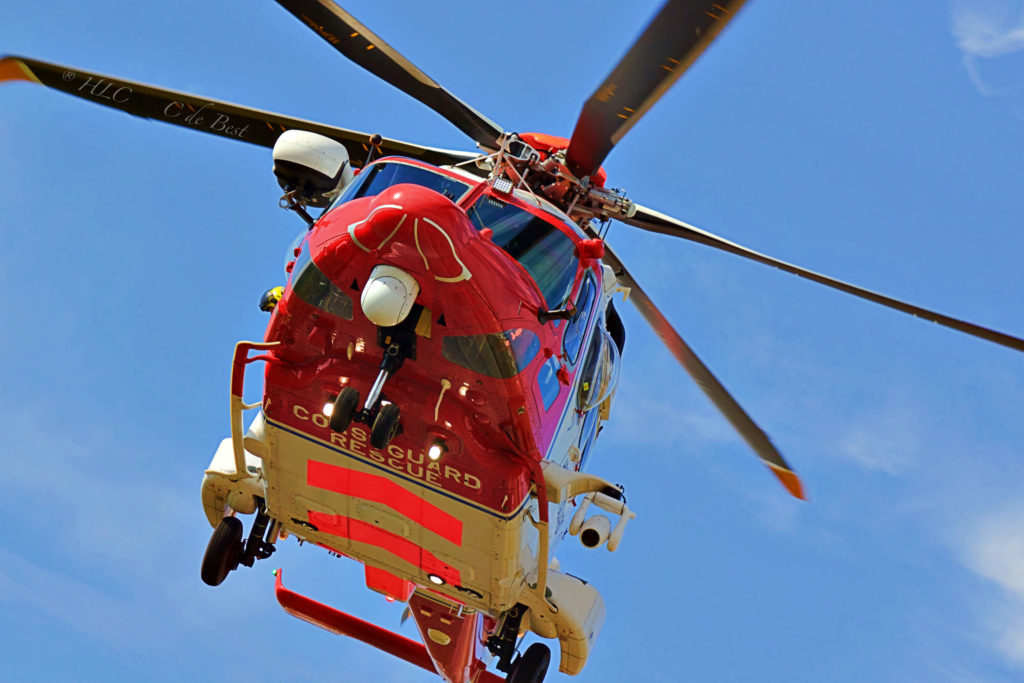
©Chris de Best / Hlcopters.
Location definition
- Coast: Taskings occurring between 0.2 mile inland and 3 nautical miles out to sea
- Maritime: Taskings that occur more than 3 nautical miles out to sea
- Land: All other taskings that are not classed as coastal or maritime
In the year ending March 2022, there were:
- 1,317 land based taskings which accounted for 48% of taskings, the same proportion as in the previous year
- 995 coast taskings which accounted for 36% of all tasking, compared to 40% in the previous year
- 435 maritime taskings which accounted for 16% of all taskings, compared to 12% in the previous year
In the year ending March 2022, the majority of:
- pre-arranged transfer taskings took place on land (69%), the same proportion as in the previous year
- rescue and recovery taskings took place on land (49%), an increase of 2 percentage points compared to year ending March 2021
- search only taskings took place at the coast (47%), a decrease of 3 percentage points compared to year ending March 2021
- support taskings took place at the coast (46%), a decrease of 4 percentage points compared to year ending March 2021
Map of tasking location by base
In the year ending March 2022, there were:
- 159 taskings from Stornoway base (North West Scotland)
- 170 taskings from Sumburgh base (North East Scotland)
- 366 taskings from Inverness base (East Scotland)
- 196 taskings from Humberside base (East England)
- 252 taskings from Lydd (South East England)
- 260 taskings from Lee on Solent (South England)
- 294 taskings from Newquay (South West England)
- 250 taskings from St. Athan base (South Wales)
- 337 taskings from Caernarfon (North Wales)
- 463 taskings from Prestwick base (West Scotland) – which covers the Lake District, Ben Nevis, and Loch Lomond and the Trossachs
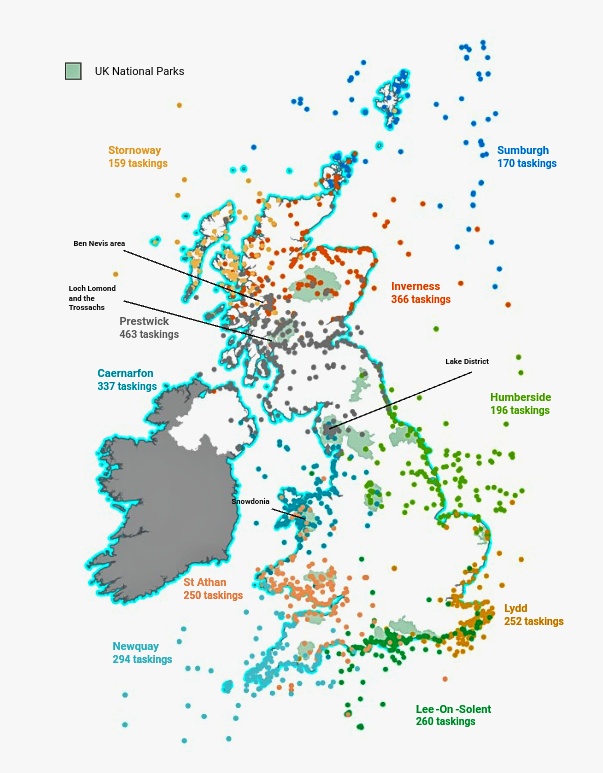
Map of tasking category
In the year ending March 2022, there were:
- 1,407 rescue or recovery taskings
- 522 support taskings
- 462 search taskings
- 356 pre-arranged transfers
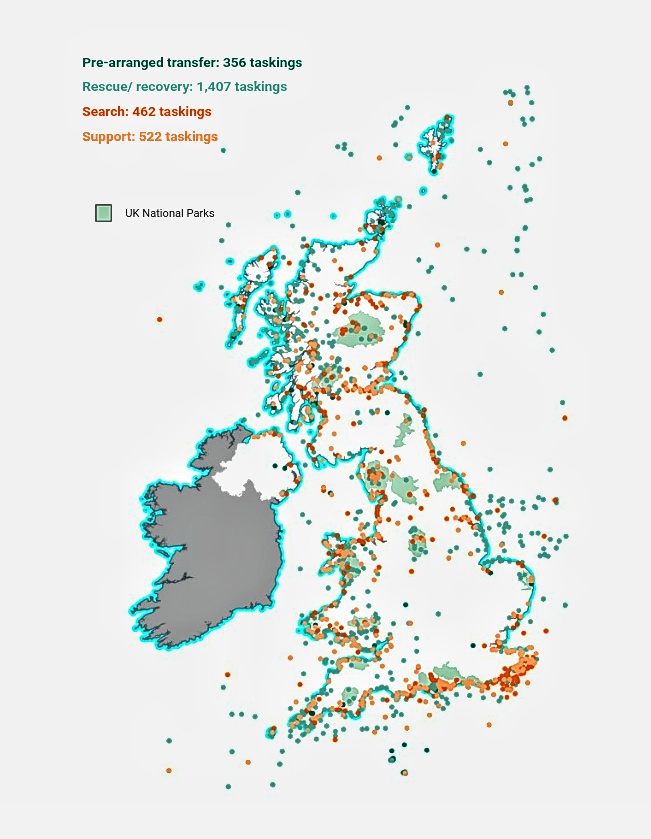
Map of civilian search and rescue bases
There are currently 10 civilian search and rescue bases open in the UK, with the taskings these bases have been assigned to up to March 2022 detailed in this report. An additional base, Portland, previously responded to search and rescue taskings until its closure in June 2017.

This HM Coastguard statistics covers civilian search and rescue helicopter (SARH) operations in the UK, for all 10 current bases. In April 2015, the operational phase of a new contract to operate civilian search and rescue helicopter (SARH) services in the UK, managed by the Maritime and Coastguard Agency (MCA), commenced. These new arrangements took over from the previous mixture of military and Coastguard SARH services.
The Department for Transport (DfT) is now responsible for the production of statistics on SARH activity. The data originates from the Aeronautical Rescue Coordination Centre (ARCC) who are responsible for the co-ordination of a SAR helicopter and is provided to DfT by the Maritime and Coastguard Agency.
For more Hlcopters Magazine breaking news, stories, images and videos follow us on Facebook, Twitter, Instagram and YouTube
